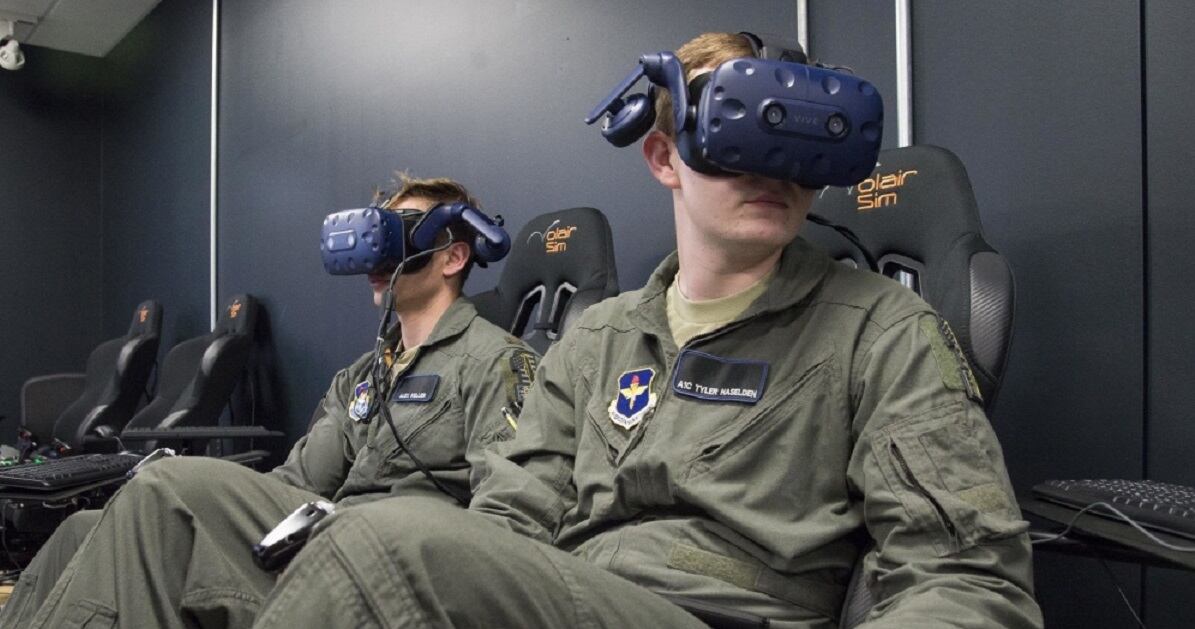For the last year, the Air Force has been experimenting with an innovative virtual reality and artificial intelligence system to train new pilots. And now, it’s piqued the interest of the United States’ closest ally.
A student pilot and an instructor pilot from the United Kingdom’s Royal Air Force have become the first aviators from another country to take part in the Air Force’s Pilot Training Next program in Austin, Texas, Air Education and Training Command spokeswoman Jennifer Gonzalez confirmed Monday.
AETC said in a March 29 release that officials from the RAF — which, like the Air Force, is facing its own serious pilot shortage — visited the program’s first iteration last May, and sent two pilots to join the second class this year.
“The RAF needs to reduce the time it takes to train a pilot, as well as increase our overall pilot numbers because we have pilots leaving faster than we can produce them,” British Army Col. Paddy Logan, assistant director for flying training of the RAF’s Headquarters 22 Group, said in the release. “Our [RAF] chief of the Air Staff has given us the go-ahead to push the envelope and innovate our pilot training pipeline. We don’t have the capacity to experiment this way, so having this partnership and having people here to learn what the [Air Force] is doing is invaluable.”
RELATED

The Air Force launched its first Pilot Training Next class in Austin’s Armed Forces Reserve Center last April. The program uses advanced biometrics, AI and virtual reality systems to look for ways to streamline how the Air Force trains new pilots. Students use commercial off-the-shelf VIVE Pro VR headsets and stations with sticks, throttles and other equipment to simulate a virtual cockpit and practice maneuvers. The system’s AI also tracks their biometrics, including stress, to tailor the simulation environment and train them most efficiently.
The British instructor pilot is RAF Flight Lt. Darren French; AETC said the student pilot is not being identified for security reasons. U.K. officials, including Logan, visited the program on March 18.
The RAF this fall plans to switch from using the Tucano as its primary trainer aircraft to the T-6 Texan II, which the Air Force also uses. As soon as that transition happens, the RAF hopes to have lessons learned from Pilot Training Next ready to fold into its new undergraduate pilot training program.
RAF Wing Commander Christopher Pote of the Headquarters 22 Group said adopting Pilot Training Next techniques could allow British student pilots to go on solo flights earlier, or require fewer sorties to achieve certain skills, without sacrificing standards and quality.
Stephen Losey is the air warfare reporter for Defense News. He previously covered leadership and personnel issues at Air Force Times, and the Pentagon, special operations and air warfare at Military.com. He has traveled to the Middle East to cover U.S. Air Force operations.




